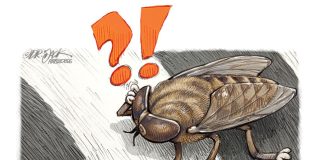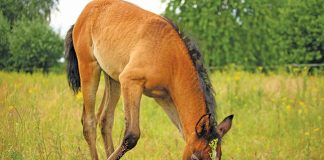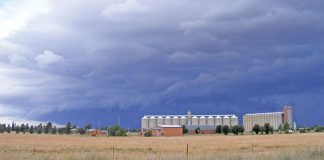
Photo: Sandid
ROOT ROT
Root rot, which is caused by Phytophthora cinnamomi, a type of fungus, occurs worldwide. In South Africa, it is one of the most important avocado diseases and is found in all production areas as well as home gardens. The severity of infection varies, but loss will be significant if no control measures are taken.
Symptoms
- Leaves are smaller and paler than normal. They turn yellow, wilt and drop off, leaving the tree bare.
- Tree growth is retarded.
- The fruit tends to remain small and show symptoms of sunburn due to the lack
of shading from the leaves. - Infected feeder roots turn black and become brittle as they die off. Where infestation is severe, virtually the entire feeder-root system may be destroyed, and the tree will die from water stress.
Prevention
- Dispersal of the pathogen requires freely moving water, so avoid planting avocado trees in soil that is prone to waterlogging.
- Water from irrigation should not be allowed to pool on the soil surface, particularly around the trunks. For this reason, sprinklers and microjets are better than flood irrigation. Avoid over-irrigating.
- The fungus has a wide host range, which includes papaya, granadilla, macadamia and various ornamental species. Avoid planting avocados on lands previously used for other host plants.
STEM CANKER
Stem canker is another form of Phytophthora infection. It can be caused by P. cinnamomi, P. citricola or P. cactorum.
Symptoms
- The bark shows a brown discoloration close to the ground. This extends into the wood.
- Infected trees usually weaken slowly, but may die off suddenly.
Prevention
Do not injure the tree stem near ground level, and avoid constant wetting of the stem. Where lesions occur, remove dead tissue and cover with a bituminous sealant.
ANTHRACNOSE
Anthracnose is a pre- as well as post-harvest problem and can cause serious losses. It is present in most, if not all, production areas of the world. Economically, the most important symptom is fruit spotting. The lesions are brown and may enlarge, coalesce and eventually cover large areas of the fruit’s surface. Such fruit often drops prematurely.
The pulp beneath the lesions becomes soft and discoloured, leaving the fruit inedible.
Where leaves are infected, a brown necrotic band spreads inwards from the margin. In severe cases, this may spread to the branch. Infected flowers turn red or brown and drop off later.
Control
A registered post-harvest dip is available specifically for anthracnose control. It should be applied in the packhouse. Control of Cercospora spot (see below) should also provide good control of anthracnose.
CERCOSPORA SPOT
Cercospora spot is a fruit-spotting disease caused by the fungus Pseudocercospora purpurea.
Symptoms include irregular, brown fruit lesions that dry out and crack, creating entry points for secondary pathogens.
Several chemicals are registered for use against this disease. These programmes will also help control sooty mould.
Always consult the product label before applying a chemical.
Source: Cultivating subtropical crops










